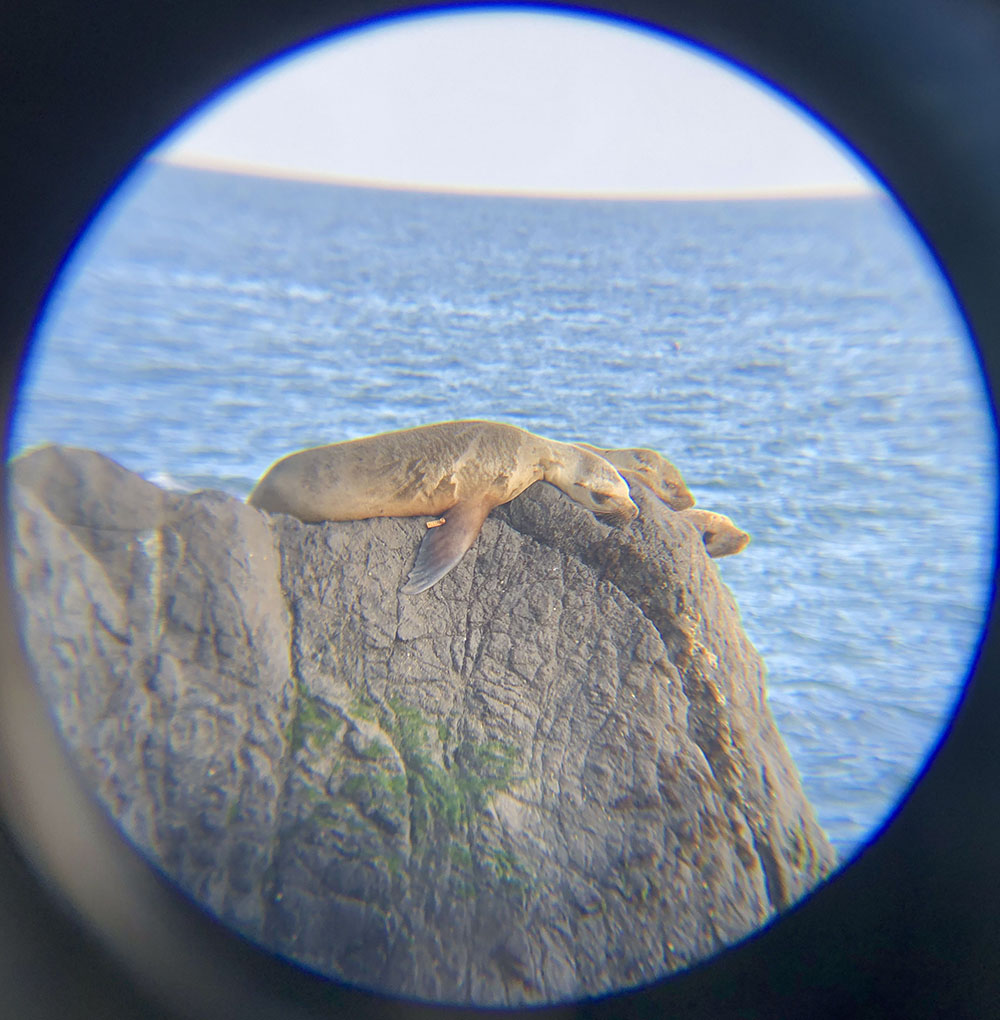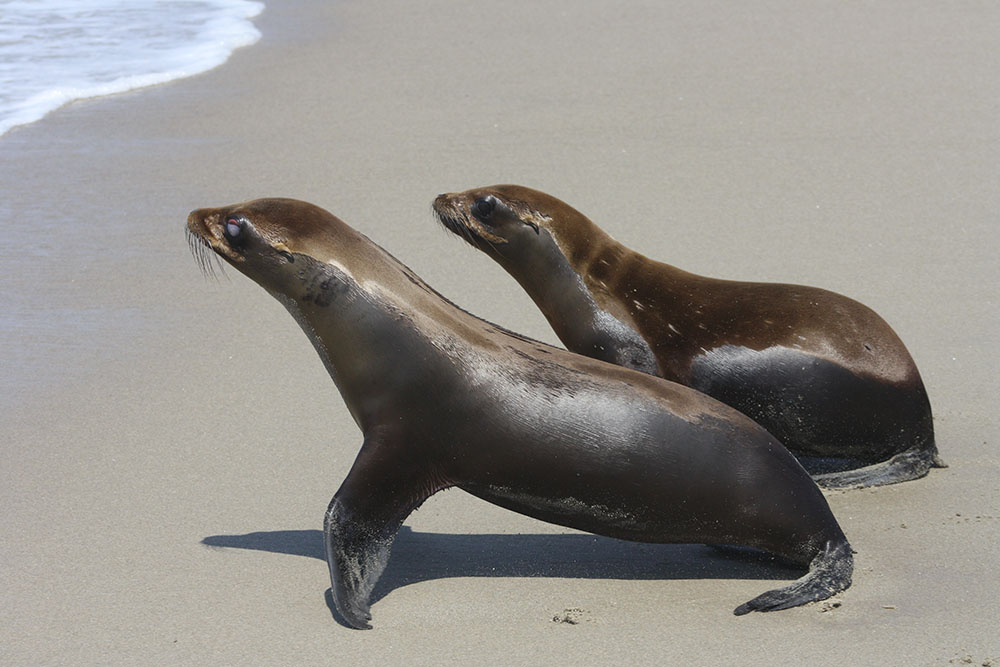Former CWC Sea Lion Patient Thriving in the Wild
By Heather Henderson, Marine Program Manager

W1134 at Point Dume in 2021, Photo by KC Scofield
At CWC and other marine rehab centers every pinniped (seal or sea lion) patient is outfitted with an orange flipper tag that has a unique identification number prior to their release. Spotting these tags on healthy animals in the wild provides rehabilitation centers valuable information about former patient survival and movement patterns.
On February 10th 2021, our marine mammal team spotted a sub-adult female California Sea Lion hauled out with others on a rock. We noticed a flipper tag on the right front flipper, indicating she had been at a marine mammal rehabilitation facility. Examining a picture snapped through binoculars we were able to read the identifiers — W1134. Exciting news: this sea lion was originally rescued and cared for at CWC!
History of this animal: Rescued as a pup from Leo Carrillo Beach on May 14th 2017 which means she was born around June 15th, 2016. Weighing only 40 pounds, she was about 55% of a healthy weight for her age and had an injured left eye. The eye was examined by the staff and topical eye medication administered. Additionally, a veterinary ophthalmic specialist came in to determine if special treatment should be considered. The conclusion that the eye damage was unchanging meant that no treatment course could restore vision; however, there also was no evidence of continued infection. She was released July 5th 2017 at Nicholas Canyon Beach, at a healthy weight of 75 pounds.

W1134 at Release in 2017, Photo by Heather Henderson
Six months later the patient was rescued again from Pirates Cove on Feb 6th, 2018, back down to 40 pounds. When patients return it is referred to as a “re-strand.” We gather information, treat any new ailments, and prepare them to be re-released. While we hope they will not re-strand, some individuals require more help preparing for life in the wild. After receiving a clean bill of health and weighing a robust 90 pounds, this female California Sea Lion was given another chance to succeed and released at Nicholas Canyon Beach on March 26th 2018.
Three years later, we are overjoyed to spot her in good body condition, sporting a healthy fur coat, and integrated into the local colony. After a rough start, rehabilitative care provided a path for this sea lion to not only survive but to thrive!
